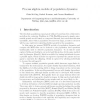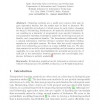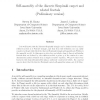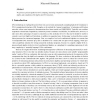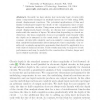112
Voted
AB
2008
Springer
15 years 7 months ago
2008
Springer
80
Voted
SP
2008
IEEE
15 years 7 months ago
2008
IEEE
Many basic tasks in computational biology involve operations on individual DNA and protein sequences. These sequences, even when anonymized, are vulnerable to re-identification a...
90
Voted
RECOMB
2010
Springer
15 years 7 months ago
2010
Springer
Given molecular genetic data from diploid individuals that, at present, reproduce mostly or exclusively asexually without recombination, an important problem in evolutionary biolog...
69
Voted
RECOMB
2010
Springer
15 years 7 months ago
2010
Springer
Clustering methods are a useful and common first step in gene expression studies, but the results may be hard to interpret. We bring in explicitly an indicator of which genes tie ...
DNA
2009
Springer
15 years 7 months ago
2009
Springer
It is well known that the discrete Sierpinski triangle can be defined as the nonzero residues modulo 2 of Pascal’s triangle, and that from this definition one can easily const...
100
Voted
DNA
2009
Springer
15 years 7 months ago
2009
Springer
We present a process algebra for DNA computing, discussing compilation of other formal systems into the algebra, and compilation of the algebra into DNA structures.
89
Voted
DNA
2009
Springer
15 years 7 months ago
2009
Springer
Recently we have shown how molecular logic circuits with many components arranged in multiple layers can be built using DNA strand displacement reactions. The potential application...
96
Voted
DNA
2009
Springer
15 years 7 months ago
2009
Springer
Abstract. Laboratory investigations have shown that a formal theory of fault-tolerance will be essential to harness nanoscale self-assembly as a medium of computation. Several rese...
113
click to vote
DNA
2009
Springer
15 years 7 months ago
2009
Springer
Process algebras are widely used for defining the formal semantics of concurrent communicating processes. In process algebra, concurrent processes can be specified to execute di...
88
Voted
DNA
2009
Springer
15 years 7 months ago
2009
Springer
Knowledge of energy barriers between pairs of secondary structures for a given DNA or RNA molecule is useful, both in understanding RNA function in biological settings and in desig...
